|
DAVINCI - BAPTISM OF CHRIST - PAGE 2
|
Zeus and Hera |
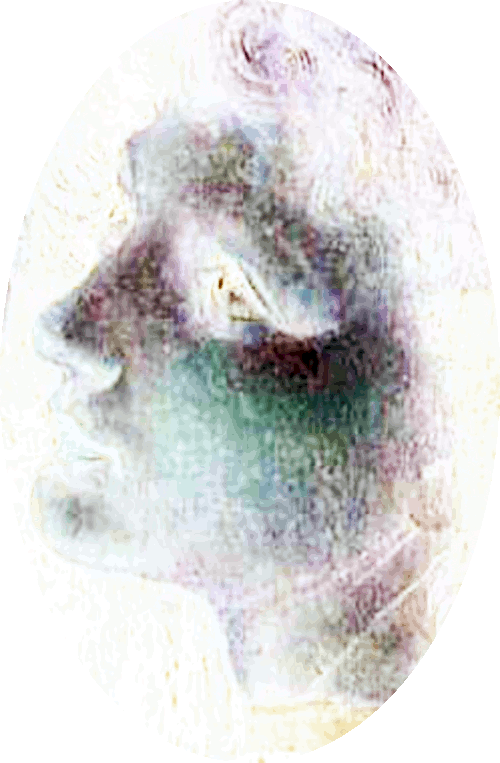
|
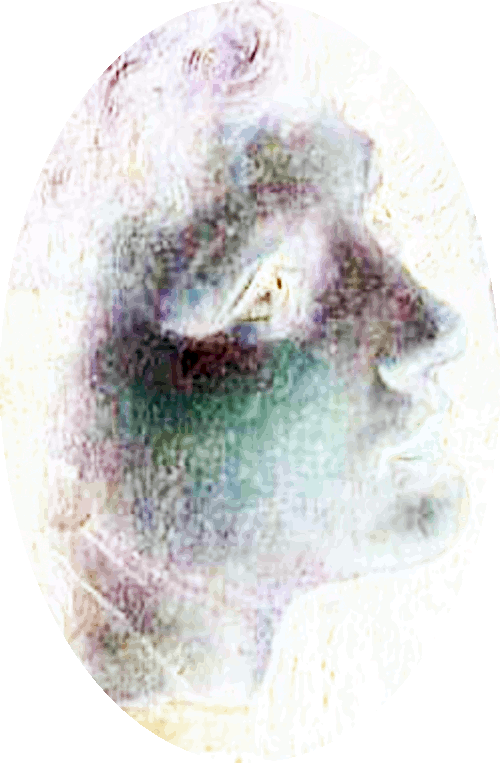 |
|
Creation story |
- The story of Zeus and Hera isn’t a
traditional love story.
- Both Zeus and Hera were the offspring of Cronus and Rhea.
In the beginning God created the heavens and the
earth. (Genesis 1:1)
|
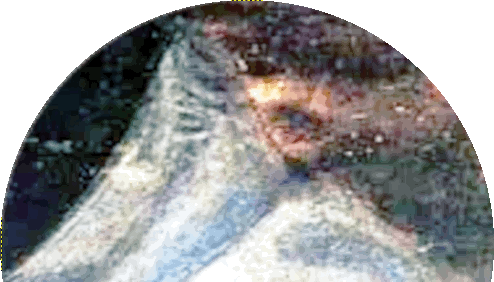
Mount Olympus fire |
- They were both members of the younger generation in Greek
mythology called the Olympians who defeated the older
generation, the Titans.
Where shall we three meet again in thunder, lightning, or in rain? When the hurlyburly’s done, when the battle’s lost and won. (Shakespeare,
Zeus)
|

Hovering over the
water |
Now the earth was formless and empty, darkness was over the surface of the deep, and the Spirit of God was hovering over the waters. (Genesis 1:2)
|
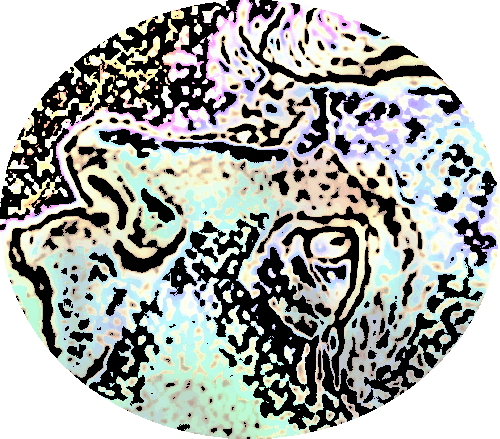
Cronus threw his father's parts into the sea |
- Their father Cronus, a Titan, swallowed
all six of his children after they were born because he didn't
want them to overthrow him.
- This was after he castrated
his father, Uranus (Anu) and threw his parts into the ocean.
Then crooked Kronos, growing bold,
Answered his well-loved mother with these words:
"Mother, I undertake to do the deed;
I do not care for my unspeakable
Father, for he first thought of shameful acts." (Hesiod, Theogony)
|
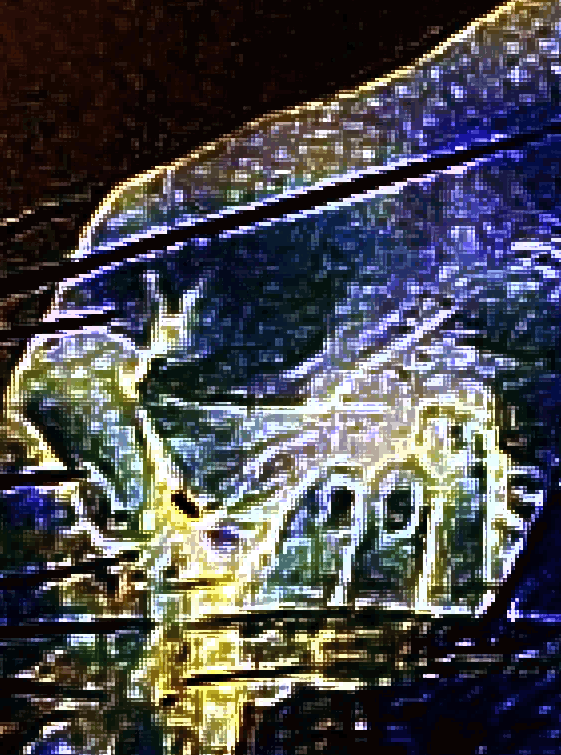
Zeus hidden in a
cave |
- Rhea, who was Zeus' mother, saved the infant Zeus by substituting a stone wrapped in swaddling clothes for Cronus to swallow and
then hid Zeus in a cave on Crete.
- Zeus represents the hunted and protected Divine Child.
- Hit by lightening
bolts which were made for him by the Cyclopes.
- Seeing through the very essence of things.
- Key Anu, to pass (something, such as a rope) through a hole or opening.
- Neo.
And God said, “Let there be light,” and there was
light. God saw that the light was good, and he
separated the light from the darkness. (Genesis 1:3-4)
|
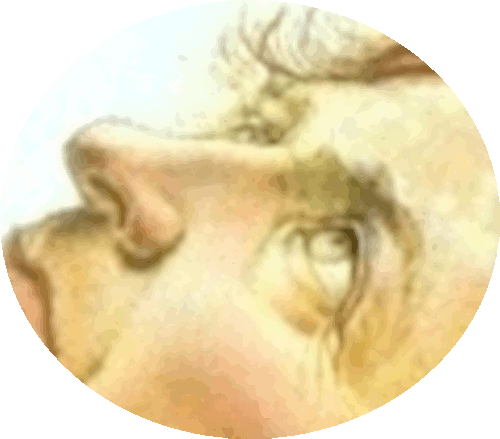
Sky and thunder god |
- Zeus was the sky and thunder god in
Greek mythology and the king of the gods on Mount Olympus
where he was was head of the Olympians.
- He was Jupiter to the Romans.
Zeus is a notorious shape-shifter. Favorite forms include bulls, snakes, and a distinguished, handsome man in his prime. Allegedly his true manifestation is a raging, incredibly bright, vivid flame, the equivalent of the flash from an atomic bomb, whose full impact mortals are unable to withstand. (occult-world.com)
|
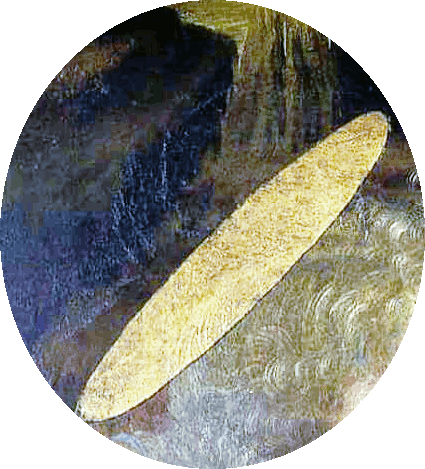
Zeus' original thunderbolt |
- Zeus most prominent symbol was the thunderbolt.
- With his brothers Hades
(Underworld) and Poseidon (Sea), Zeus (Heaven) had dominion over the world.
There is nothing either good or bad, but thinking makes it so. (Shakespeare,
Hades)
|
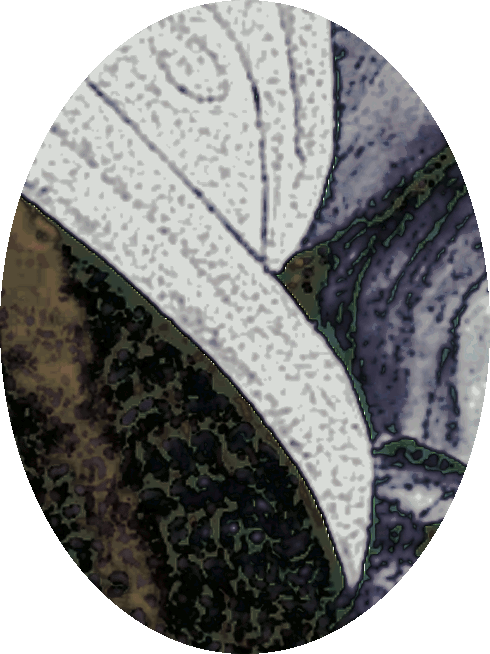
Eagle |
- Zeus was also represented by the eagle, bull, wolf, snake
and bear.
Zeus was nursed by a bear, dog, dove, goat, sow, or bees, all of whom may or may not be Nymphs in animal guise. (occult-world.com)
|
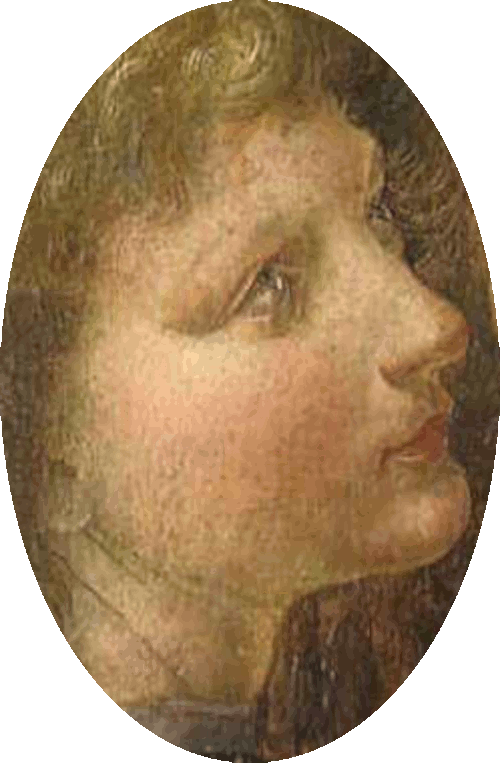
Hera |
- Hera was the Greek goddess of women, marriage,
family, and childbirth.
- She was known
to the Romans as Juno.
Hera was initially worshiped as a Lady of the Beasts, a goddess of abundance and fertility. In approximately 600 BCE, she made a major transformation. Emphasis was placed on her roles as wife and mother rather than her original functions. (occult-world.com)
|
God called the light “day,” and the darkness he called “night.” And there was evening, and there was morning—the first day. (Genesis 1:5)
|
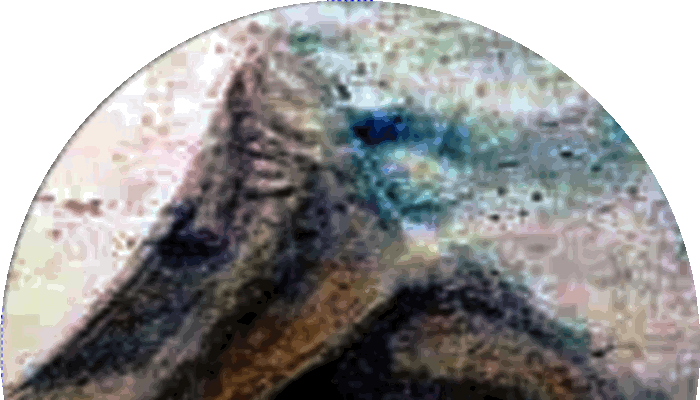
Mount Olympus smoke |
- Hera was both sister and wife of Zeus, king of gods, with whom she reigned on Mount Olympus.
- Much of what is portrayed as jealousy may be Hera
attempting to retain her autonomy and power, and to protect her own children’s birthright as Zeus’ other children
were granted more favor and power.
And God said, “Let there be a vault between the
waters to separate water from water.” So God made the
vault and separated the water under the vault from the
water above it. And it was so. (Genesis 1:6-7)
|
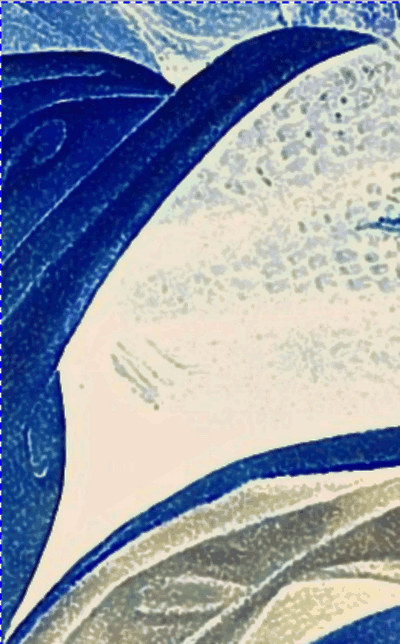
Vaulted ceiling |
God called the vault “sky.” And there was evening, and there was morning—the second day. (Genesis 1:8)
|
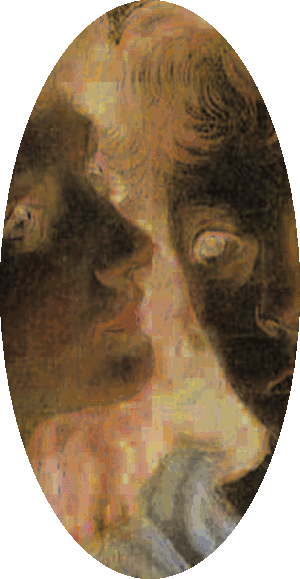
Hera ox-eyed |
- Homer gave Hera the epithet 'ox-eyed'
or 'cow-eyed' because of her large full eyes and described her as tall and striking.
My tongue will tell the anger of my heart, or else my heart concealing it will break. (Shakespeare,
Hera)
|
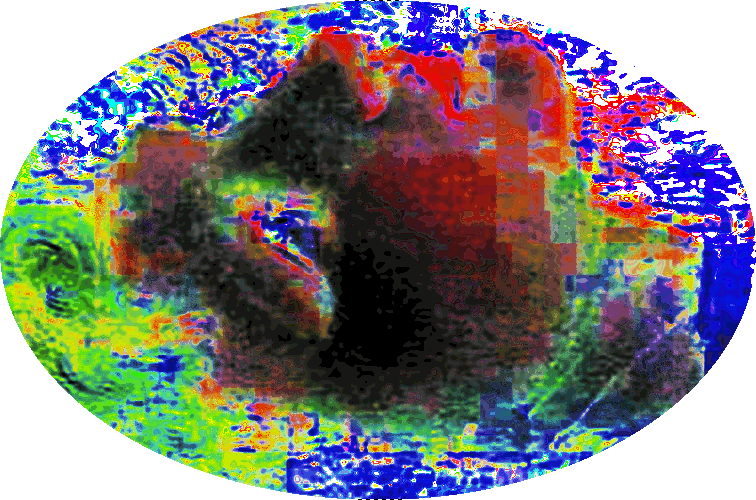
Pomegranate immortal
Hera |
- Hera is sometimes shown holding a pomegranate as an emblem of immortality.
- She loved lilies and poppies.

Hera crow |
-
Among her attributes are the crow, the cuckoo, and the peacock
which pulled her chariot.
- Hera is Greece’s primordial sacred cow.
- She is
also represented by the snake, dragon, crab and snail.
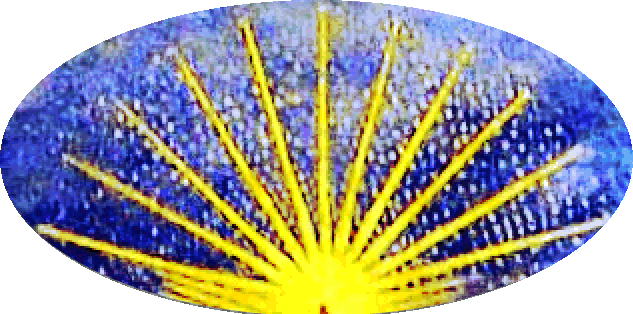
Hera
peacock crown |
- Hera is often depicted seated on a
throne and wearing a crown due to her role as queen of the gods on Mount Olympus.
- She was often shown in Greek artwork with white arms,
wearing a bridal veil, and golden sandals.
And God said, “Let the water under the sky be gathered to one place, and let dry ground appear.” And it was so. God called the dry ground “land,” and the gathered waters he called “seas.” And God saw that it was good. (Genesis
1:9-10)
|

Zeus enchanted |
- Zeus, king of gods, courted countless women,
but it was Hera the goddess of marriage, with whom he was enchanted.
-
Zeus wanted to have Hera by his side as the queen of the gods as he ruled over the universe, Hera, however, had no intention of ever becoming Zeus’ wife
because he was so distracted by other women.
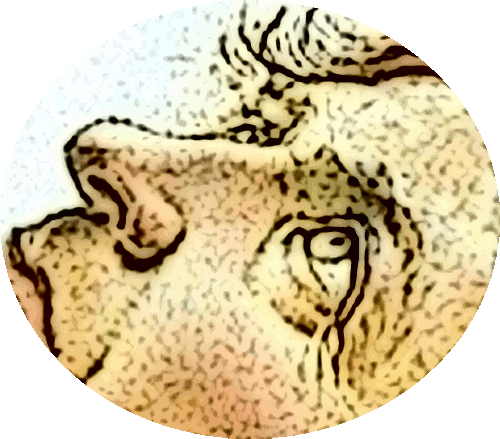
Zeus rejected |
- He had many love affairs with both mortal and immortal women.
-
Hera rejected all the marriage proposals she received from him.
Zeus had many loves who were both goddesses and mortal women, which resulted in the births of younger deities and heroes;
including Apollo,
Artemis, Hermes, Persephone, Dionysus, Perseus, Heracles,
Helen of Troy, Minos, and the Muses. (Wikipedia).
|
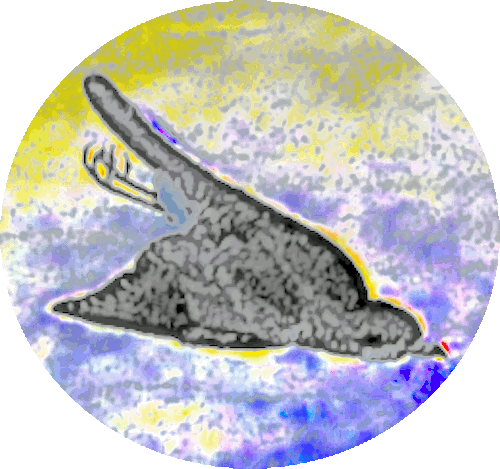
Rain-soaked helpless
little cuckoo |
-
In order to achieve his amorous schemes, Zeus frequently assumed animal forms, such as that of a cuckoo when he
seduced Hera.
- Zeus was relentless and
came up with a plan that would help Hera soften her heart.
- One day, Zeus changed himself into a rain-soaked helpless little bird whose
sorry condition was enough to melt even the
chilliest of hearts.
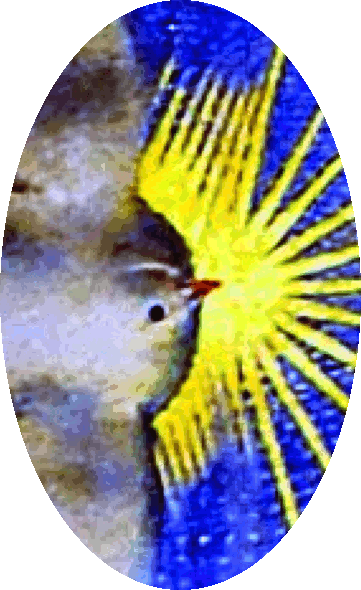
Nestled in Hera's
warm bosom |
- When Hera saw the little bird, she took pity on it and nestled it in her bosom to dry it and give it warmth
and comfort.
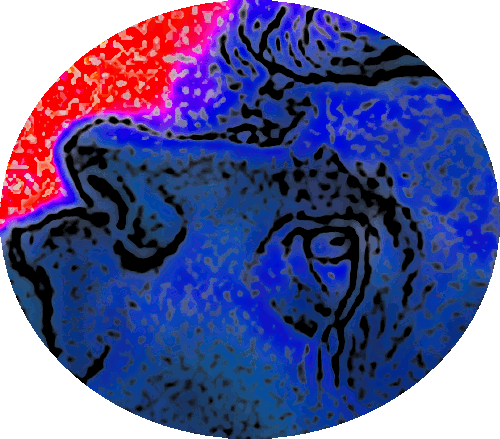
Zeus changing back into a god |
- At that moment, Zeus transformed back into his true form.
- Hera couldn’t help herself, she fell in love with him.
- This time, when he asked her to be his wife, she
accepted.
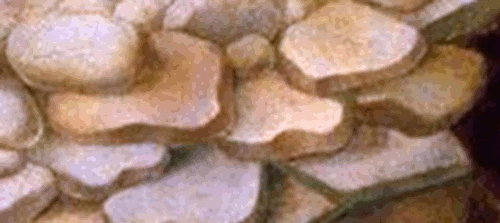
Rocky road |
- That marked the beginning of a vicious cycle of lust, infidelity, jealousy, and vengeance that would be the
hallmark of their relationship.
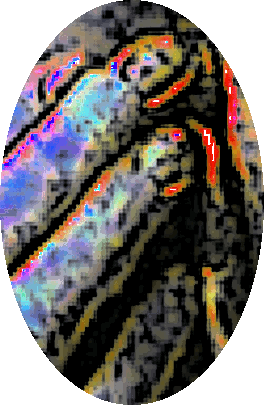
Marriage ceremony |
- Zeus and Hera’s marriage ceremony was the first of its kind in Olympia.
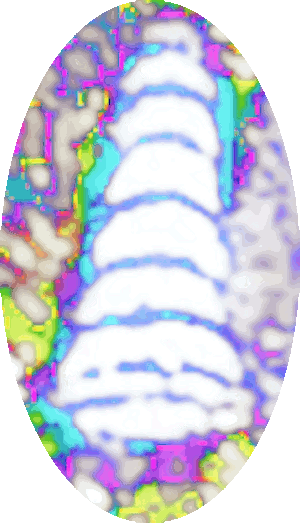
Wedding cake |
- All the deities were in attendance and they presented them with magnificent gifts.
- Zeus and Hera's wedding was celebrated with feasting and merriment in the Garden of the Hesperides.
Then God said, “Let the land produce vegetation: seed-bearing plants and trees on the land that bear fruit with seed in it, according to their various kinds.” And it was so. (Genesis
1:11)
|
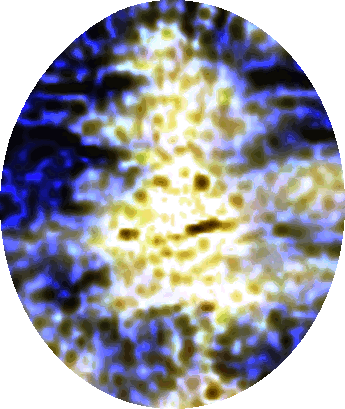
Enchanted tree |
- Gaia, the earth goddess, was grandmother to the bride.
- She gifted Hera with an enchanted tree that when planted would produce
delicious golden apples.
The land produced vegetation: plants bearing seed according to their kinds and trees bearing fruit with seed in it according to their kinds. And God saw that it was good. And there was evening, and there was morning—the third day. (Genesis 1:12-13)
|
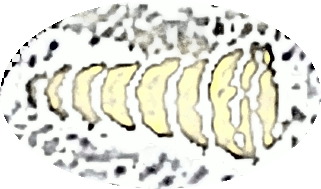
Wedding night |
- Once the festivities came to an end, Zeus and Hera had a glorious wedding night that lasted a staggering 300 years.
- Or perhaps it was something like 3 days and 3 nights.
And God said, “Let there be lights in the vault of
the sky to separate the day from the night, and let
them serve as signs to mark sacred times, and days and
years, and let them be lights in the vault of the sky
to give light on the earth.” And it was so. (Genesis 1:14-15)
|

Large family |
- Together, Zeus and Hera
had four children: Ares the god of war, Eileithyia, the
goddess of childbirth and Hebe, the goddess of youth.
- When Hera found out that Zeus gave birth to a child
(Athena) without her help, she impregnated herself in retaliation and gave birth to a son named Hephaestus.
|
Ares
|
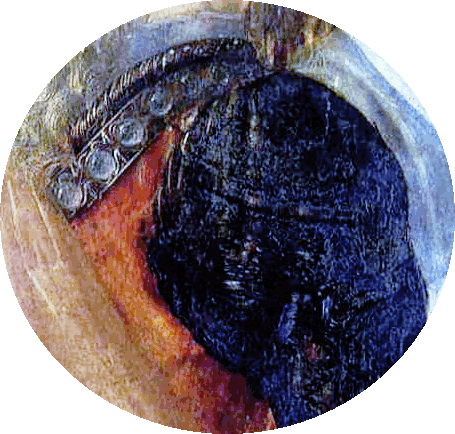
War helmet |
- Ares was the Greek god of war and courage.
- He was the
son of Zeus and Hera and the half-brother of Athena.
- Ares
personified sheer brutality and bloodlust, in contrast to his sister Athena, whose martial functions include military strategy.
Cowards die many times before their deaths, the valiant never taste of death but once. (Shakespeare,
Ares)
|
|
Hebe
|
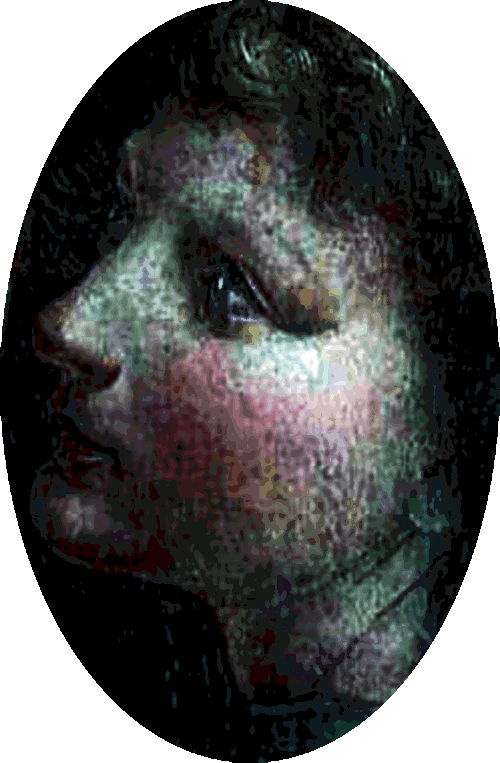
Youthful |
- Hebe was the Greek goddess of youth and the prime of life.
-
She was the
daughter of Zeus and Hera and the half-sister of Athena.
- Hebe was married to Heracles.
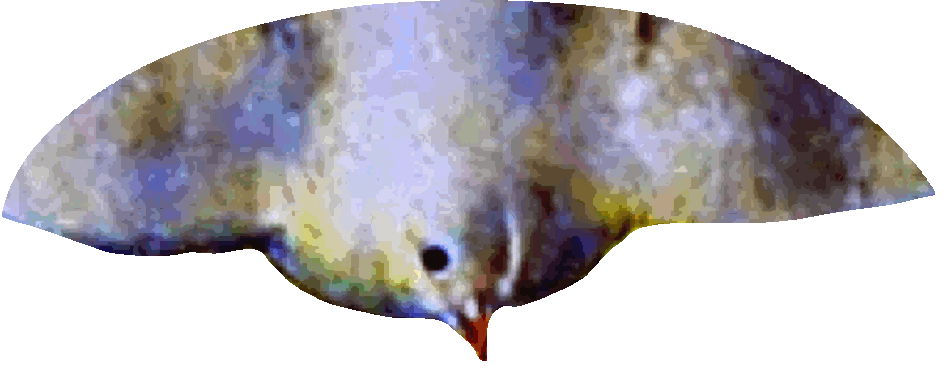
Talking dove |
- Hebe's father Zeus gifted her two doves with human voices, and one flew to
the location that the Oracle of Dodona was established.
-
She is symbolized by ivy, the fountain of youth, eagle and
wings.
Though she be but little, she is fierce. (Shakespeare,
Hebe)
|
|
Eileithyia |
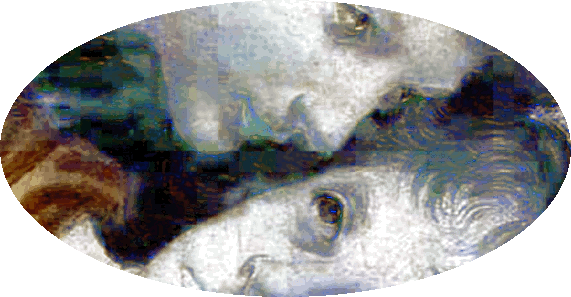
Dominion over childbirth |
-
Eileithyia was the goddess of childbirth and midwifery,
which she could either help or hinder.
-
She was the
daughter of Zeus and Hera and the half-sister of Athena.
- Depicted holding a torch.
- She often aided her mother,
Hera, helping her enact revenge on Zeus' lovers.
And even as when the sharp dart striketh a woman in travail, the piercing dart that the Eilithyiae, the goddesses of childbirth, send—even the daughters of Hera that have in their keeping bitter pangs. (Homer,
Iliad)
|
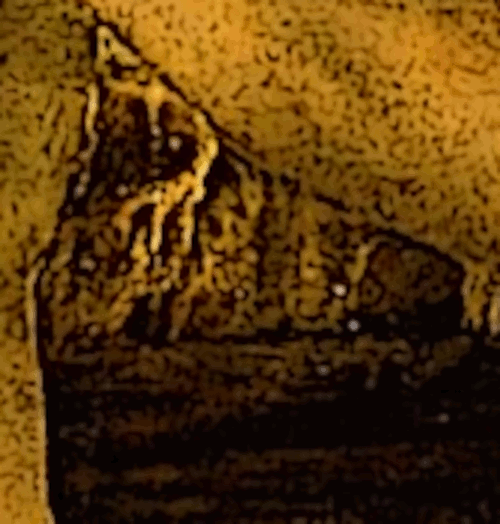
Cave of Amnisos |
- Eileithyia was related with the annual birth of the divine child
in the cave of Amnisos in Crete.
- She was one of the
first goddesses ever recorded in Greek mythology.
|
Hephaestus
|
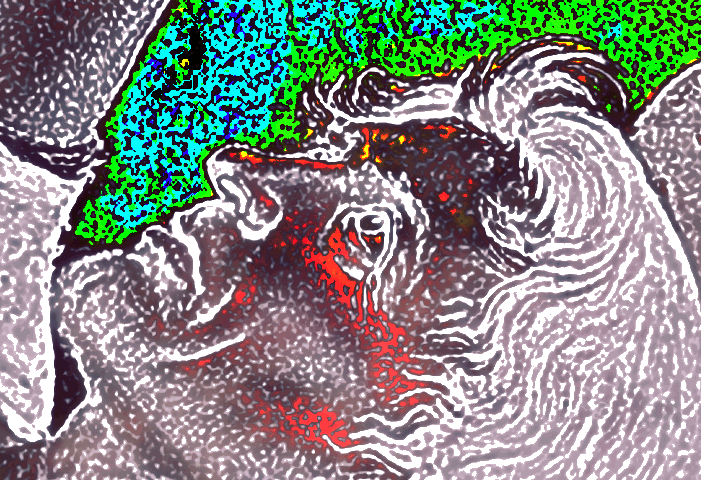
Craftsman |
- Hephaestus was the Greek god of artisans, blacksmiths, carpenters, craftsmen, fire, metallurgy, metalworking, sculpture and volcanoes.
- He was the
son of Zeus and Hera and the half-brother of Athena.
-
Hephaestus was the blacksmith to the gods.
- His symbols are a smith's hammer, anvil, and a pair of tongs.
Come what come may, time and the hour runs through the roughest day. (Shakespeare,
Hephaestus)
|
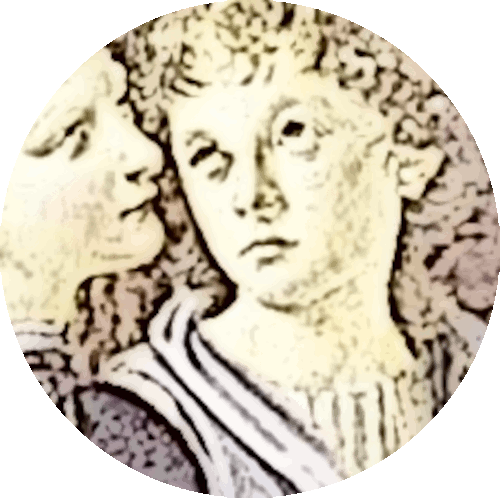
Hera and her son Hephaestus |
- The boy was severely deformed and nowhere near as
alluring as Athena was.
- He was cast off Mount Olympus by his mother Hera because of his lameness.
- Hephaestus was married to Aphrodite who had an affair with
his brother Ares.
She is an oracular spirit who has the power to fulfill virtually any petition. Hera punishes by striking those who displease her with sudden madness. (occult-world.com)
|
God made two great lights—the greater light to govern the day and the lesser light to govern the night. He also made the stars.
God set them in the vault of the sky to give light on
the earth, to govern the day and the night, and to
separate light from darkness. And God saw that it was
good. And there was evening, and there was morning—the fourth day. (Genesis 1:16-19)
|
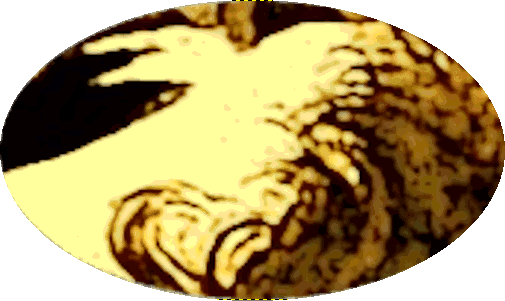
Zeus flies the coop often |
- The honeymoon phase of their marriage was short-lived.
- The couple endured a rocky relationship which can be attributed to Zeus’ philandering ways.
- No woman was off-limits to him.
And God said, “Let the water teem with living
creatures, and let birds fly above the earth across
the vault of the sky.” (Genesis 1:20)
|
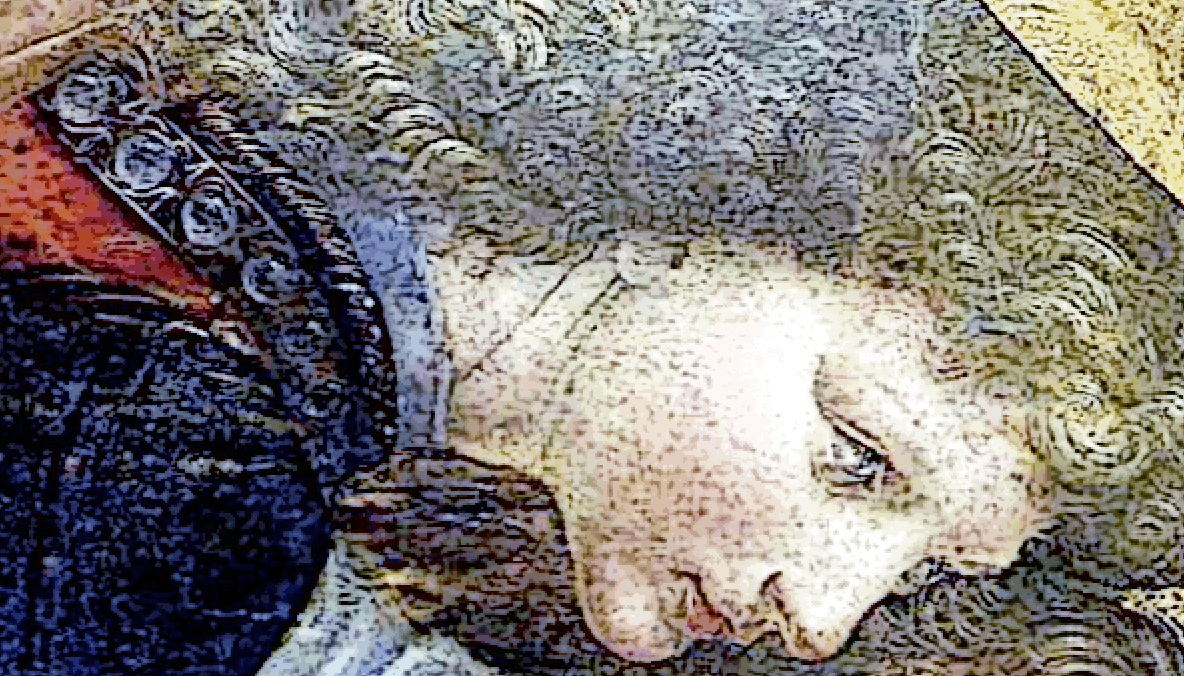
Jealous, vengeful wife |
- Zeus had countless affairs with goddesses, nymphs and mortals alike.
- This turned Hera into a jealous, vengeful wife.
- She spent all her time on Mount Olympus spying on her husband and plotting revenge against his lovers.

Hera depressed and
frail |
- Hera, together with Poseidon, led an unsuccessful rebellion against Zeus.
- Zeus punished Hera by hanging her from the clouds with anvils tied to her feet.
- Depressed, Hera wrapped herself in deepest darkness and wandered Earth in the form of a frail, decrepit old woman.
- She is always a humble old beggar woman and is quick to
punish those who don't treat her with respect.
- She always returned to Zeus.
Not all the water in the rough rude sea can wash
the balm from an anointed King. (Shakespeare,
Poseidon)
|
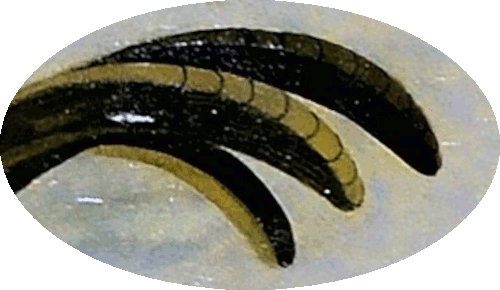
Eel |
So God created the great creatures of the sea and
every living thing with which the water teems and that
moves about in it, according to their kinds, and every
winged bird according to its kind. (Genesis 1:21)
|
|
Mnemosyne |

Sing to me oh Memory |
- Mnemosyne was the goddess of memory
in Greek mythology, and she was a Titan.
- She was the daughter
of Uranus and Gaia.
- Most Titan's are viewed as archaic in
Greek mythology, however, Mmenosyne was one of the few still
remembered and she appears in both the Iliad and the Odyssey.
The term Mnemosyne is derived from the same source as the word mnemonic, that being the Greek word mnēmē, which means "remembrance, memory." (Wikipedia)
|
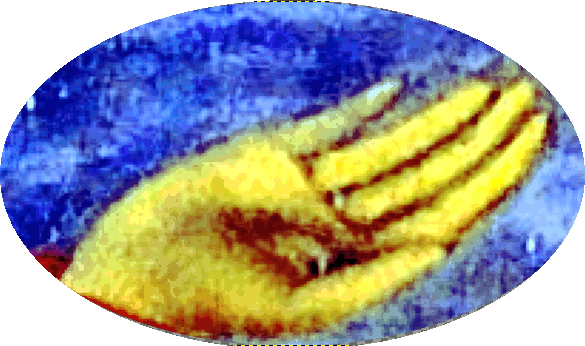
Zeus as a shepherd |
- Zeus, in the guise of a shepherd, overtook the young
woman Mnemosyne, his aunt, and slept with her for nine
consecutive nights.
-
The result of their encounter was the Nine Muses, who were similar to everything.
|
The Nine
Muses |
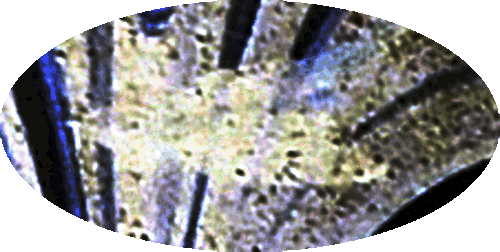
Sing to me oh Muse |
- The Nine Muses were: Clio, Euterpe, Thalia, Melpomeni, Terpsichore, Erato, Polymnia, Ourania and Calliope.
- They are the inspirational goddesses of literature, science, and the arts.
-
Considered the source of the knowledge in Greek oral
tradition embodied in poetry, lyric songs, and myths.
If music be the food of love, play on. (Shakespeare,
Muses)
|
|
Wife #1 Metis |
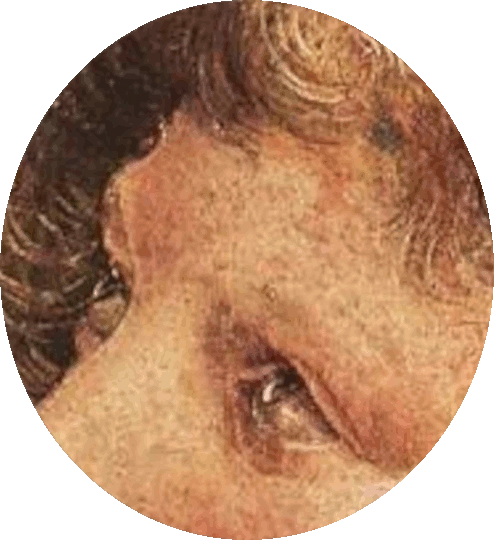
Wisdom |
- Metis, the goddess of wisdom, was
Zeus’ cousin and first wife.
-
She gave Zeus a potion to cause his father Cronus, the supreme ruler of the cosmos, to vomit out his siblings
after his father had swallowed them out of fear of being overthrown.
- According to a prophecy,
Metis would bear two children.
And God saw that it was good. God blessed them and said, “Be fruitful and increase in number and fill the water in the seas, and let the birds increase on the earth.”
(Genesis 1:22)
|
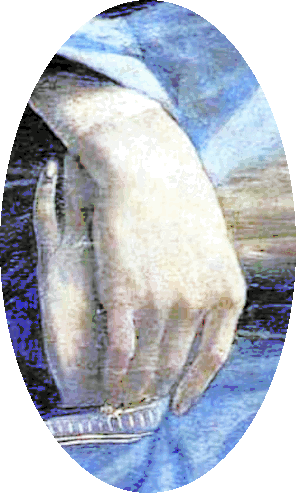
Metis son growing fast |
- The first child born to Metis would be Athena and the second, a son who would be powerful enough to overthrow Zeus.
- This made Zeus very anxious.
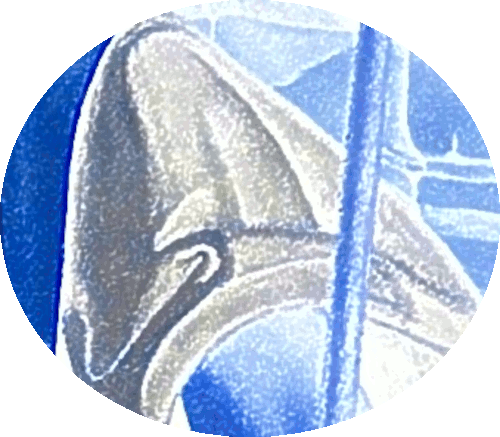
Athena war goddess gear |
- Zeus hatched a plan to exterminate Metis.
- He tricked her, and she allowed him to turn her into a fly.
- He then swallowed her not realizing that she was already pregnant.
And there was evening, and there was morning—the fifth day. (Genesis 1:23)
|
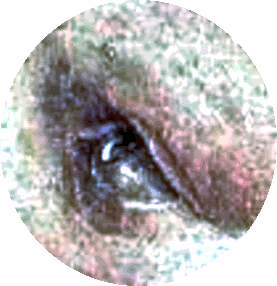
Metis as a fly
living in Zeus |
- Unknown to Zeus, Metis, still in the form of a fly, lived on in
his body while the baby grew.
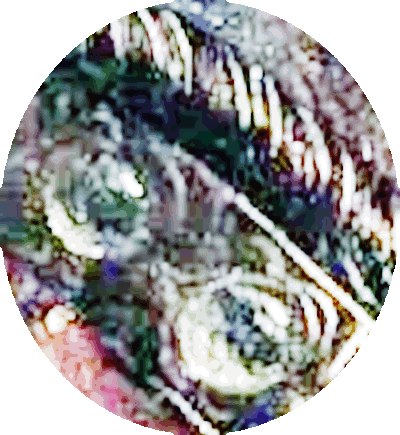
Titaness Metis
crafting a spear |
- Metis crafted armor, a spear, and a shield for her daughter, whom she raised in Zeus' mind.
- Metis built all Athena's armor and the hammering gave Zeus
headaches.
- As a result, Zeus would later give birth to a powerful daughter.
- Athena (or Roman Minerva), was born from Zeus'
forehead
after he swallowed the Titaness Metis.
I would challenge you to a battle of wits, but I see you are unarmed. (Shakespeare,
Athena)
|
|
Athena |
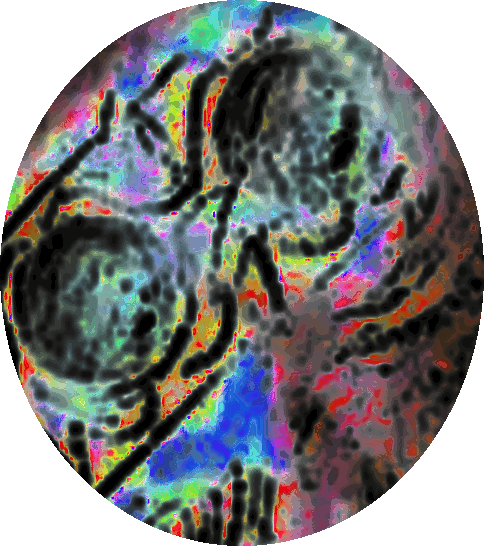
The owl |
- Athena, the daughter of Zeus and Metis, was symbolized by
the owl which represented wisdom.
- She was the Greek
goddess of peace.
- Athena was the favorite child of Zeus, she had great power
and was born fully armed from his forehead.
- She invented the bit, bridle, chariot, and wagon.
They said that Athena was the daughter of Zeus not from intercourse, but when the god had in mind the making of a world through a word (logos) his first thought was Athena. (Justin Martyr).
|
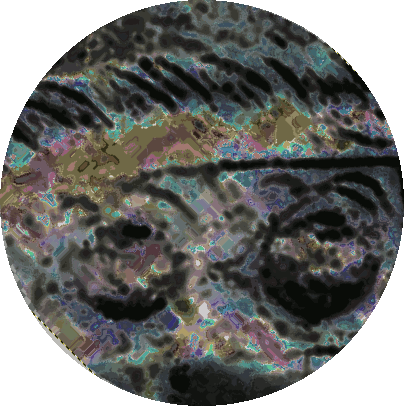
Hera bug-eyed |
- Hera was bug-eyed from tracking Zeus and all his
girlfriends around.
- After swallowing Metis, Zeus took six more wives in succession until he married his seventh,
Hera, who was cow-eyed.
And God said, “Let the land produce living creatures according to their kinds: the livestock, the creatures that move along the ground, and the wild animals, each according to its kind.”
(Genesis 1:24)
|
|
Nike |
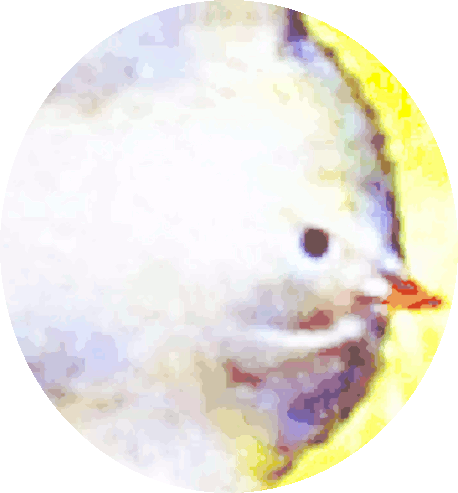
Victory in battle
and after |
- Nike was the goddess of victory in Greek mythology; she
was the daughter of Pallas and Styx.
-
She is known for her association with victory in battles and for her close relationship with Zeus and Athena.
-
She helped the Olympians beat the Titans in the Titan War and attended all battles and competitions.
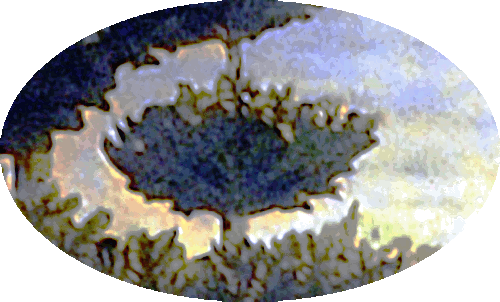
Laurel wreath |
- Nike was symbolized by the laurel wreath of bay leaves
which were given to winners.
- Personifies victory in any field including art, music, war, and athletics.
- While her counterpart Athena's authority was limited to strictly military victories.
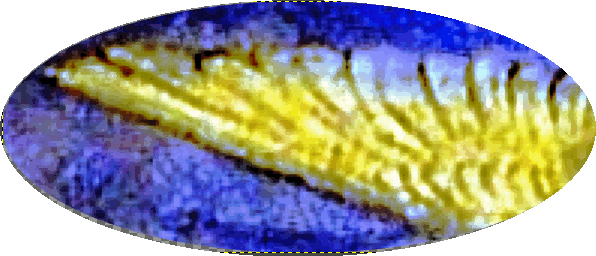 |
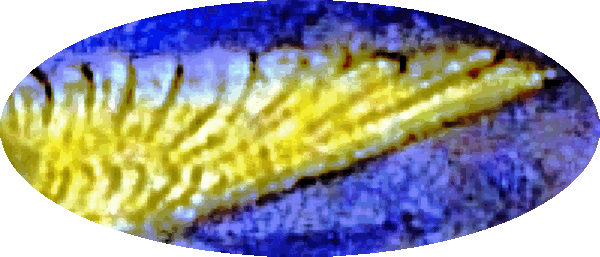 |
|
Winged victory |
- Nike's victory symbol is derived from goddess' wing, 'swoosh', which
represents the sound of speed, movement, power and motivation.
|
Maia |
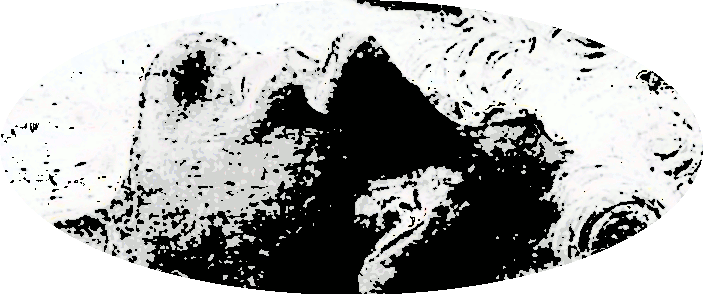
Seven Pleiades |
- Maia is the daughter of Atlas and Pleione the Oceanid, and is the oldest of the seven Pleiades.
- Zeus, in the dead of night, secretly made love to Maia, in a cave of Cyllene.
- Maia was the mother of Hermes, messenger of the gods, who was fathered by Zeus.
- Maia also raised the infant Arcas, the child of Callisto
and Zeus.
The rapidly maturing infant Hermes crawled away to Thessaly, where, by nightfall of his first day, he stole some of his half-brother Apollo's cattle and invented the lyre from a tortoise shell.
(Wikipedia)
|
|
Hermes |
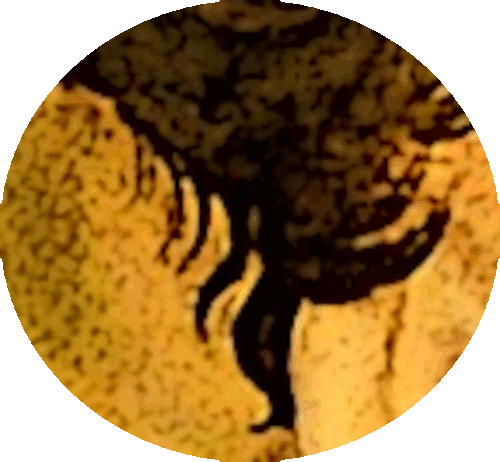
Winged messenger of
the gods |
- Hermes (Mercury), the divine trickster, was the son of Zeus and Maia.
- He had a winged helmet and sandals.
- Zeus sent Hermes on a mission to teach humans how to bond
with each other.
- Hermes was the protector of human
heralds, travelers, thieves, merchants, and orators.
My words fly up, my thoughts remain below. Words without thoughts never to heaven go.
(Shakespeare, Hermes)
|
|
Callisto |
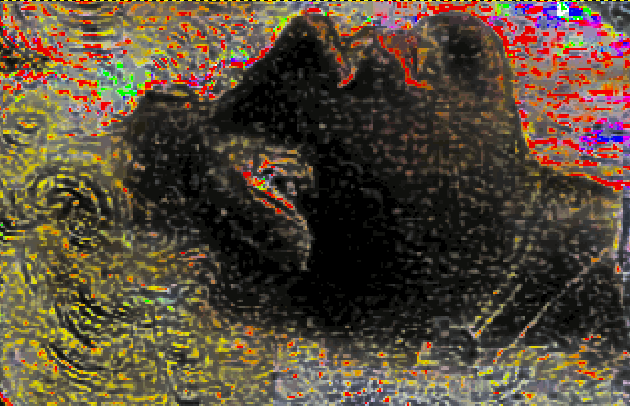
Turned into a bear |
- Callisto was a nymph and the goddess Artemis’ hunting companion.
-
Zeus transformed himself into the figure of Artemis to pursue Callisto, and she slept with him believing Zeus to be Artemis.
-
Soon after she discovered she
was pregnant.
- When Hera found out, she was infuriated and changed Callisto into a bear and tried to persuade Artemis to shoot her.
|
God made the wild animals according to their kinds, the livestock according to their kinds, and all the creatures that move along the ground according to their kinds. And God saw that it was good. (Genesis 1:25)
|
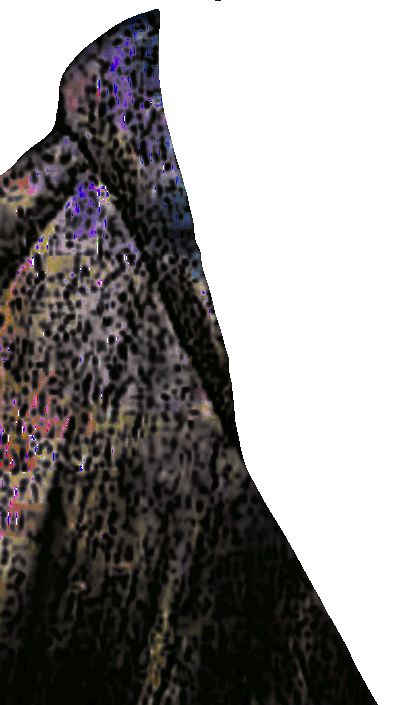
Callisto cloaked and turned into a constellation |
- Zeus intervened and sent his son Hermes to recover the child from
Callisto's womb and named him Arcas.
-
Zeus hid Arcas in an area of Greece, which would come to be called Arcadia, in his honor.
- He eventually transformed both mother and child into a constellation of stars to keep them safe from his
Hera's wrath.
|
Eurynome |
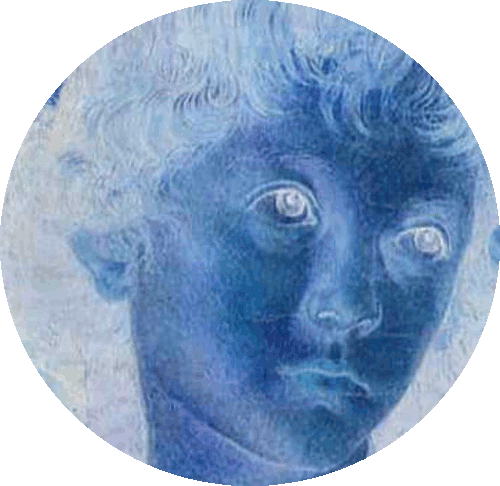
Oceanid mermaid |
- Eurynome, a mermaid, was associated with the Oceanid, or
'daughter of Ocean' in Greek poetry.
- She was the daughter
of Oceanus and Tethys.
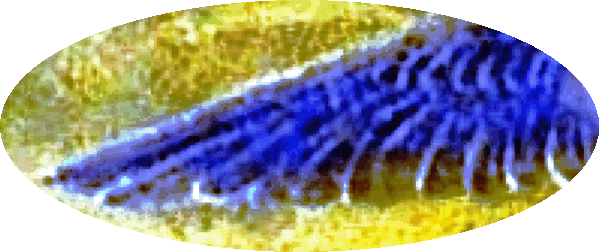 |
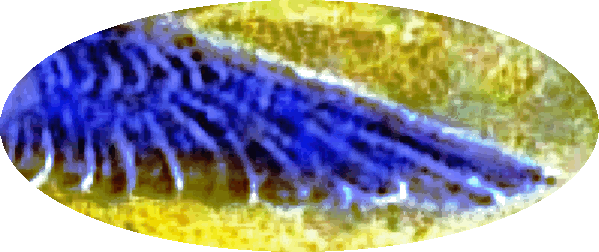 |
|
Finned victory |
- Eurynome was the third bride of Zeus and mother of the
Charites, goddesses of grace and beauty.
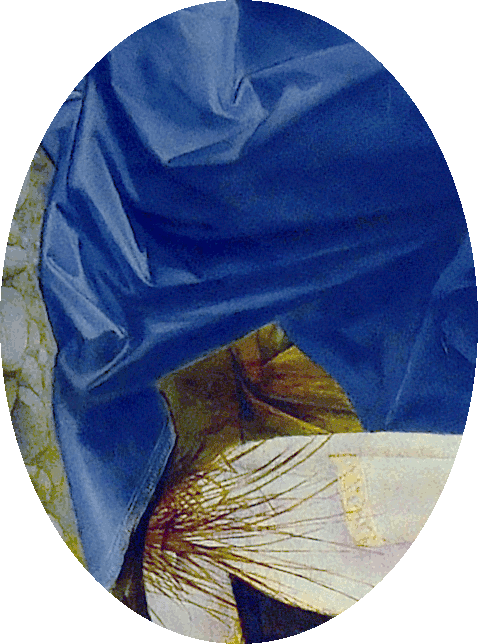
Zeus ocean view |
- The Charites were three or more goddesses of charm, beauty, nature, human creativity, goodwill, and fertility.
- They were the daughters of Zeus and Eurynome.
- Hesiod named three; Aglaea (Shining), Euphrosyne (Joy), and Thalia (Blooming).
|
Io
|
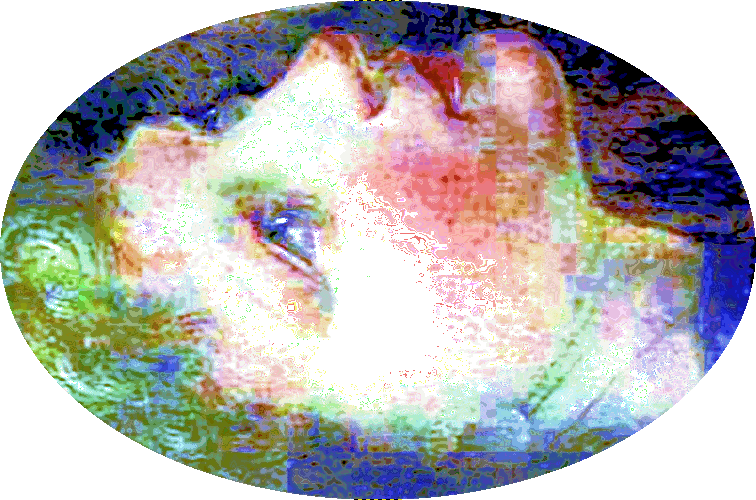
Stung by a gadfly |
- Io was another woman that Zeus fell in love with.
- She was a beautiful mortal girl who lived in Argos at the time.
- When Zeus laid eyes on her, he decided to disguise himself as a cloud and
then seduced her.
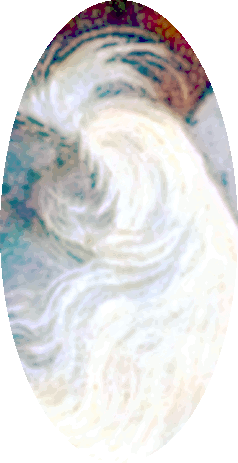
Zeus disquised as a cloud |
-
When Hera heard what Zeus was up to with Io, she was livid.
- Io suffered a lot of misery in the hands of
Hera.
- In order to keep Io away from her Zeus, Hera turned the young mortal into a cow.
- And if that wasn’t enough, she sent a gadfly to sting her repeatedly.
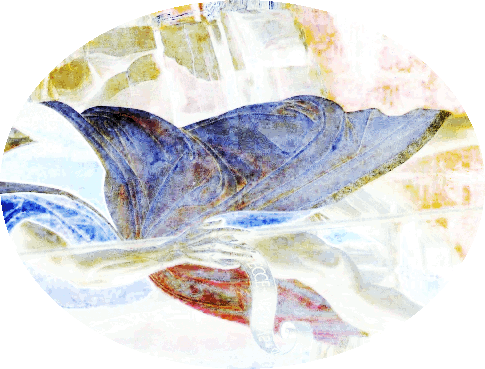
Red Robin |
Then God said, “Let us make mankind in our image,
in our likeness, so that they may rule over the fish
in the sea and the birds in the sky, over the
livestock and all the wild animals, and over all the creatures that move along the ground. (Genesis 1:26)
|
|
Alcmene |
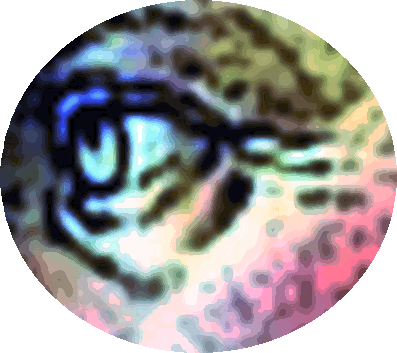
Eyes more beautiful than Aphrodite's |
- In Greek mythology, Alcmene (Alkmene) was the mortal wife of Amphitryon.
- One day when her husband went to battle against the Taphians and the Teleboans, Zeus disguised himself by transforming into Amphityron
so he could seduce her.
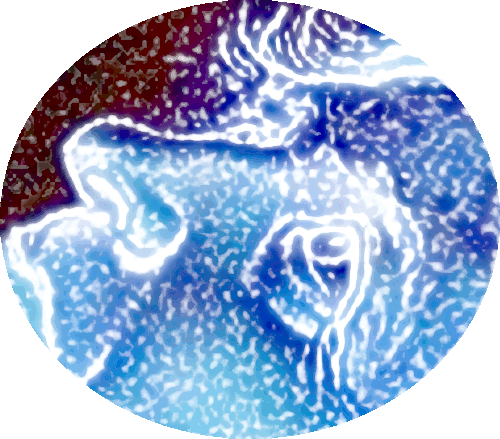
Zeus spends three nights with Alcmene |
- When Zeus desired Alcmene, he decided to make one night
last three by ordering his son Helios, the god of the sun, not to rise
for three days, so he would have more time with her.
|
Heracles |
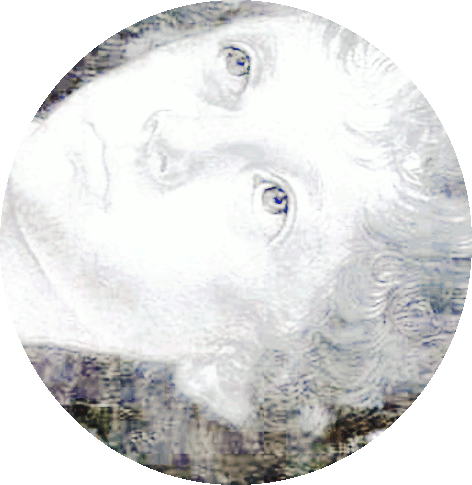
Zeus illegitimate
son |
- When Alcmene went into labor, Zeus made a great proclamation that the child who was to be born on that particular day would become the ruler of Mycenae.
- Their union resulted in a son, a demigod named Heracles
(Hercules to the Romans).
- Hera was angered when she found out that Zeus had once again
disrespected their marriage.
Be not afraid of greatness. Some are born great, some achieve greatness, and others have greatness thrust upon them. (Shakespeare, Hercules)
|
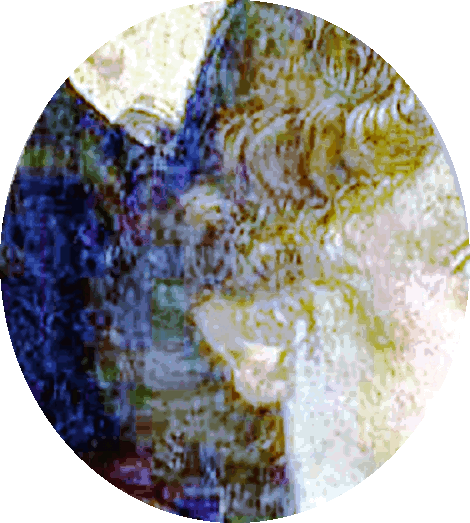
Prince of Mycenae |
- In a rage, Hera instructed Ilithyia, the goddess of childbirth to delay Alcmene’s birth for seven days and instead induce the wife of Sthenelus to have an early birth two months before her due date.
-
Sthenelaus’ son went on to become Mycenae’s ruler.
- However,
that didn’t stop Hera from relentlessly persecuting Heracles
into adulthood.
So God created mankind in his own image,
in the image of God he created them;
male and female he created them. (Genesis 1:27)
|
|
King Ixion |
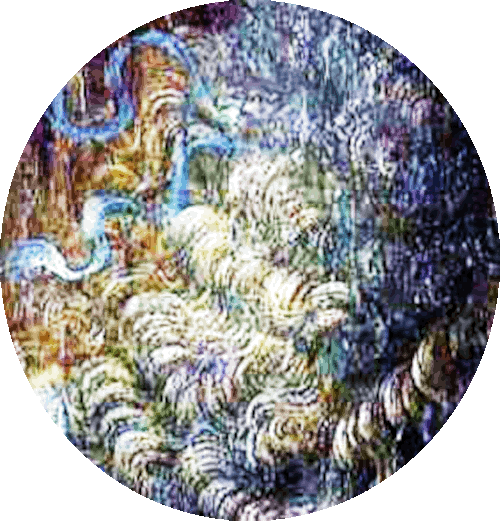
Tricked by a cloud |
- It wasn’t just Hera with a jealous streak in their marriage.
- When Ixion, the king of the Lapiths attempted to seduce Hera, Zeus found out and tricked him into making love to a cloud instead.
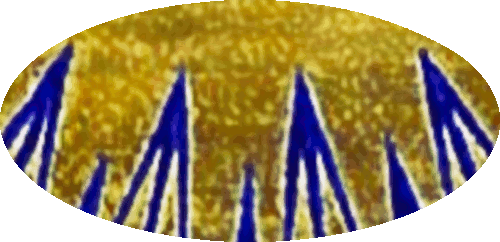
Time clock |
-
Zeus meted out his anger on Ixion by banishing him to the underworld where he would be tied to an ever-spinning wheel of fire for all eternity.
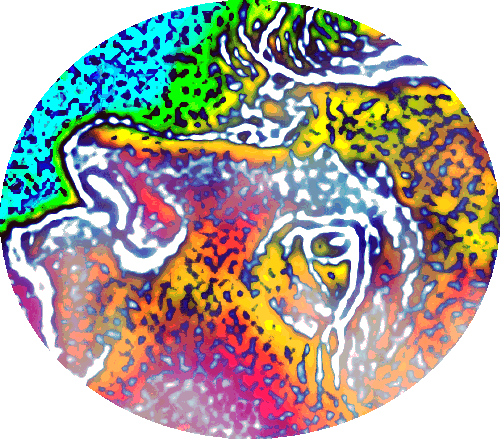
Zeus' lover's
punished |
- Despite Zeus’ wandering eye, Hera remained fiercely loyal to him.
- While she had numerous opportunities to cheat on Zeus, she spent most of her time punishing the objects of his desires.
|
Dione |
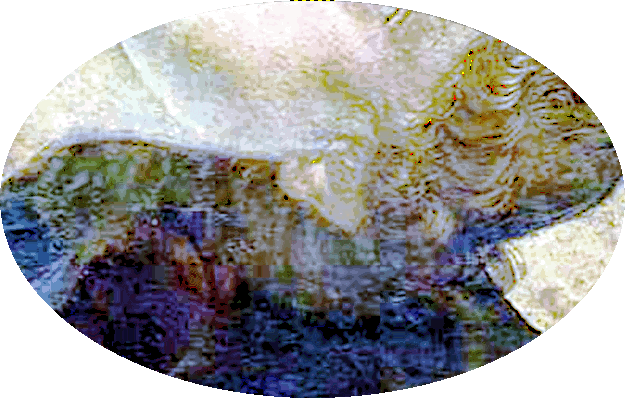
Headless Dios |
- Dione was the Greek goddess of
abundance.
- She was considered the personification of fertile
land, agriculture and harvest, especially fruit trees.
-
Dione also held the title Titan goddess of the oracle of Dodona in Thesprotia.
- She was the daughter of Uranus and Gaia,
however she was not made from his seed but from Oceanus and
Tethys.
- Dione was the wife left behind; she stayed behind in Dodona while Zeus married other goddesses, most notably Hera.
Some scholars have argued that during an early phase of Greek mythology and religion, it was Dione, not Hera, who was Zeus’ primary wife and queen.
(mythopedia.com)
|
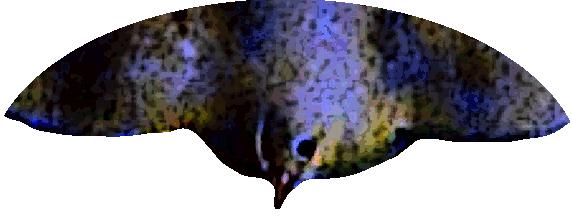
Black
Dove |
- At the
oracle of Dodona, Dione was Zeus' consort, with whom the Iliad states that he fathered Aphrodite.
- Hesiod
also listed Dione among the wives of Zeus, some say his first,
but others claim they never married.
- Two Saturnian moons, Dione and Rhea, have formed two-thirds of a snowman and
all that's missing is the head.
The priestesses of Dodona claimed that two black
doves had flown to Libya and Dodona and commanded the
creation of oracles to Zeus. (Wikipedia)
|
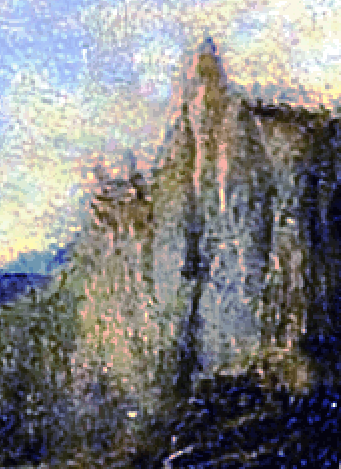
Divinities living on
Mount Olympus |
- Her name is simply the feminine form of Zeus (Dios).
- Dione was usually depicted with a scepter and veil
and she was symbolized by a heifer which represented fertility.
- In Homer, Dione appears as one of the divinities living on Mount Olympus alongside the twelve Olympians, the rulers of the Greek pantheon.

Helios sets on command for Zeus |
- Dione had four children; Helios, the Titan god of the sun,
Selene, the goddess of the moon, and twins Oceanus and Tethys.
- These four children lived on a Saturnian satellite and Dione
had the children with Zeus who was in the form of a cloud.
God blessed them and said to them, “Be fruitful
and increase in number; fill the earth and subdue it.
Rule over the fish in the sea and the birds in the sky
and over every living creature that moves on the
ground.” (Genesis 1:28)
|
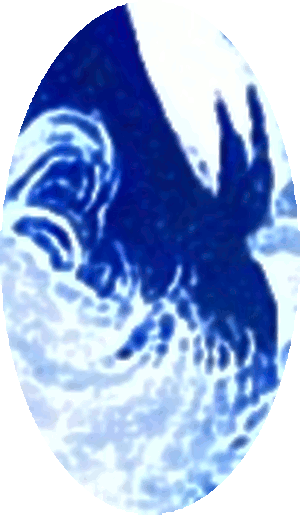
Eagle in the river |
- Zeus saw how happy the children were he sent his eagle to
take the children away.
- The eagle dropped the children into
the river Oceanus and they were raised by the river god.
Be of good heart, my child, and endure for all your suffering; for many of us who have dwellings on Olympus have suffered at the hands of men, while bringing grievous woes on one another. (Iliad)
|
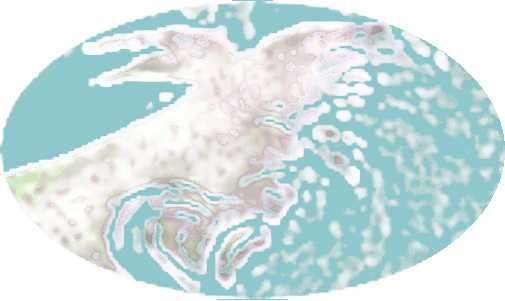
Aphrodite's sacred
Dove |
- The dove was the sacred bird of Dione
and Zeus' daughter Aphrodite, the goddess of love, who also possessed a temple at the shrine.
I love you with so much of my heart, that none is left to protest. (Shakespeare,
Aphrodite)
|

Aphrodite created
from Cronus' foam |
-
The birth of Aphrodite rising from the froth of the sea.
Cronus castrated Uranus and threw his father’s testicles into the sea. They caused the sea to foam and out of that white foam rose Aphrodite, the goddess of love and beauty. (Julie L. Mellby)
|
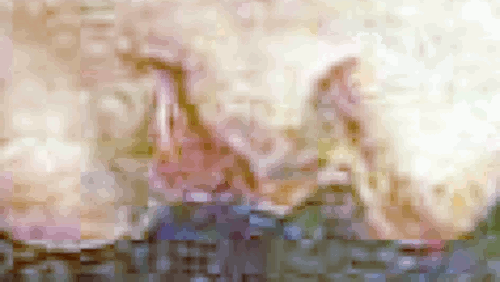
Cast of Aphrodite and Dione (?, Figures L and M) from east pediment of Parthenon |
- The cast is of two seated female divinities (Figures L and
M) which were made from one block of marble for the north
(viewer's right) corner zone of the Parthenon's East Pediment
(438-433 BC).
- Both headless.
|
Demeter |
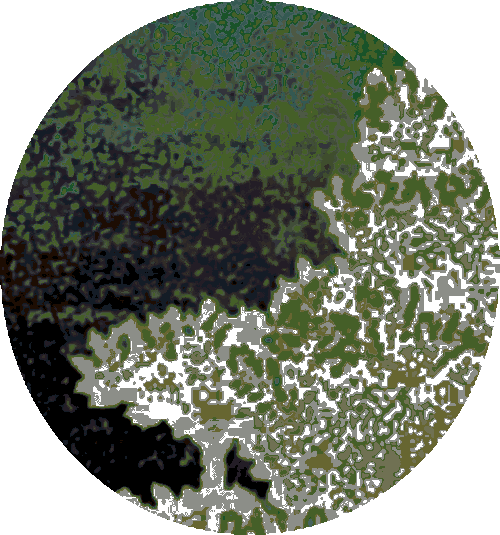
Agriculture
(Demeter) and
Harvest (Zeus) |
- Demeter was the
Greek goddess of agriculture and harvest, especially grain.
One touch of nature makes the whole world kin. (Shakespeare,
Demeter)
|
- She personified the nurturing and fertile aspects of Earth
and was also the
goddess of poppies.
- Bigbird is Zeus,
a rooster.
Then God said, “I give you every seed-bearing plant on the face of the whole earth and every tree that has fruit with seed in it. They will be yours for food."
(Genesis 1:29)
|
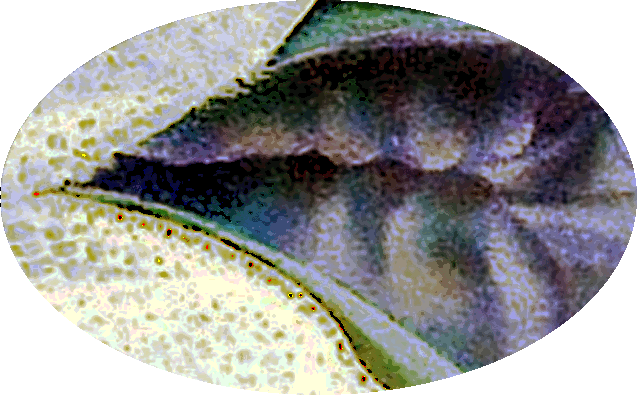
Peapod |
- Demeter was the daughter of Cronus and Rhea, and sister of Hestia, Hera, Aides, Poseidon, and Zeus.
- She was Ceres to the Romans, but she is also Dione.
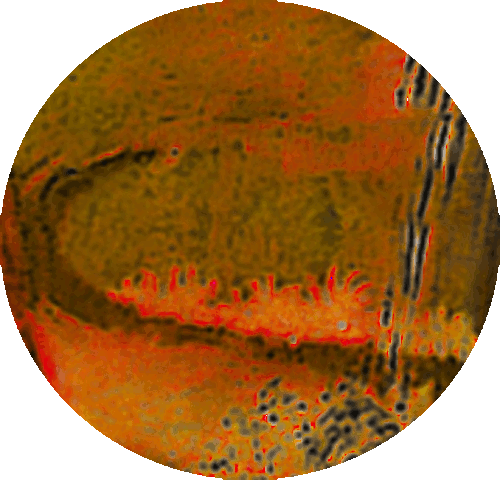
Mystic basket |
- Demeter was symbolized by ears of grain, and a mystic basket filled with flowers, grain, and fruit of all kinds
Demeter dwelt upon earth among men, conferring presents and blessings wherever she was kindly received, and severely punishing those who repulsed her or did not receive her gifts with proper reverence. (theoi.com)
|
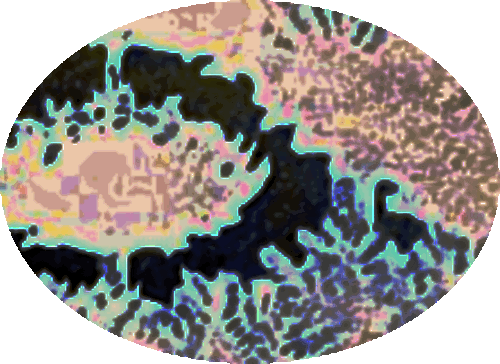
Poppies |
- Like the other children of Cronus,
she was devoured by him and then rescued by Metis.
-
Demeter mated with her brother Zeus, and gave birth to Persephone (Proserpina) and Dionysus.
Give me a bowl of wine. In this I bury all unkindness. (Shakespeare,
Dionysus)
|
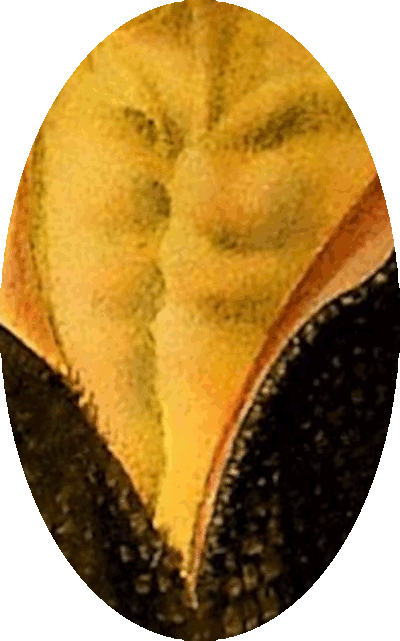
Zeus as a serpent |
- In another version of the story, Zeus had intercourse with Persephone in the form of a serpent, producing Dionysus.
- Zagreus was a god identified with an Orphic Dionysus, a son of Zeus and Persephone, who was dismembered by the Titans and reborn.
|
Melinoë |
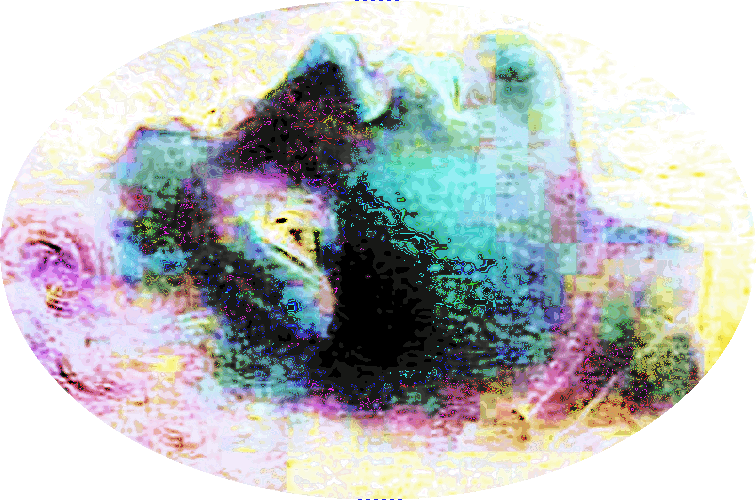
Night terror cavity |
- Zeus and Persephone were also the
parents of Melinoë who was represented as a bringer of nightmares and madness.
- Her name meant having the color of quince, a fruit with yellowish-green color
that evoked the pallor of illness or death for the Greeks.
She brings night terrors to mortals by manifesting in strange forms, "now plain to the eye, now shadowy, now shining in the darkness", and can drive mortals insane. (Orphic
Hymns)
|
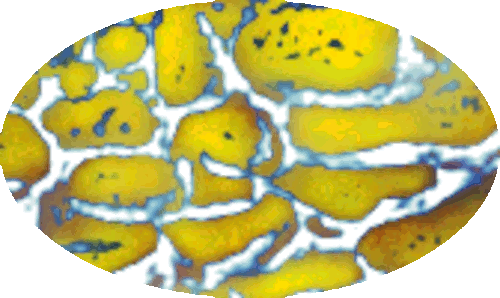
Drought and famine |
- After Hades stole her daughter Persephone and took her to
the underworld.
- Demeter was so angry she inflicted a drought
on the world and stopped the harvest which then caused a
famine.
If I had my mouth, I would bite; if I had my liberty, I would do my liking. In the meantime, let me be that I am, and seek not to alter me. (Shakespeare,
Persephone)
|
|
Danaë |

Argive princess |
- Danaë was an Argive princess.
-
She was the mother of Perseus who was fathered by Zeus.
-
Danaë was the daughter of King Acrisius of Argos and his wife Queen Eurydice.
- Her father, King Acrisius, discovered from an oracle that
she would give birth to a son who would kill him.
-
Because of this, the king had Danaë imprisoned in a brass
tower (chamber) with no doors or windows and wanted to trap
her there for life.
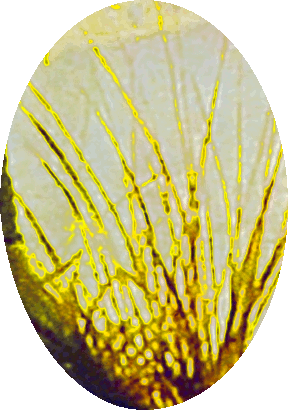
Golden rain |
- Zeus
desired Danaë and came to her in the form of a golden rain
which streamed down into the chamber and into her womb and
soon after Perseus was born.
- Later in life, Perseus
brought back Medusa's head and rescued Andromeda.
King Acrisius cast Danaë and Perseus into the sea in a wooden chest. The sea was calmed by Poseidon and, at the request of Zeus, the pair survived. (Wikipedia)
|
|
Leda |

Spartan queen |
- Leda was an Aetolian princess who became a Spartan queen.
- She the daughter of the Aetolian King Thestius.
- Leda
was married to King Tyndareus of Sparta.
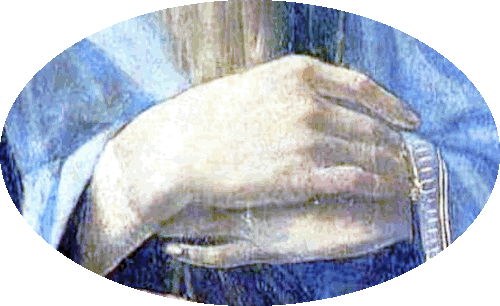
Swan neck finger |
- Leda was admired by Zeus, who seduced her in the guise of a swan.
- Mercury poisoning.
- Apparently she felt sorry for him and believed he was
harmless so then he let his fingers do the walking.

Eagle preening |
- While he was still a swan, Zeus fell into Leda's arms for protection from a pursuing eagle.
- On the same night, Leda lay with her husband the king,
and two eggs were produced.
- As a result, Leda gave
birth to Helen of Troy, Clytemnestra, Castor, and Pollux.
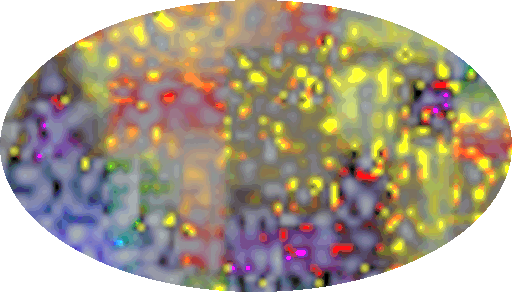
Leda and the Egg |
- Although there was no such thing as a DNA test back
then so it's unclear which egg hatched came from Zeus.
Castor and Pollux are sometimes both mortal, sometimes both divine. One consistent point is that if only one of them is immortal, it is Pollux. It is also always stated that Helen is the daughter of Zeus.
(Wikipedia)
|
|
Semele |

A mere mortal |
-
Semele was the daughter of Cadmus and Harmonia, at Thebes, and mother of Dionysus (Bacchus)
with Zeus.
- Her affair with Zeus enraged his wife, Hera, who, disguised as an old nurse, coaxed Semele into asking Zeus to visit her in the
"same splendour" in which he would appear before Hera.
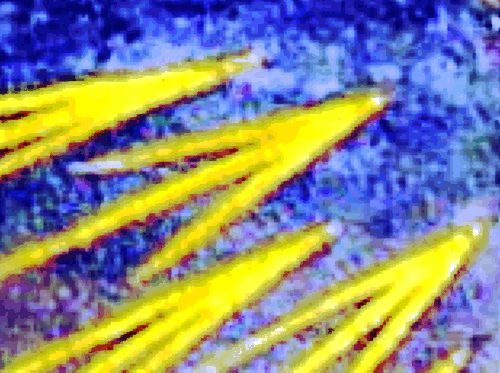
Splendour of Zeus
firebolts |
- Zeus had already promised to grant Semele her every wish and thus was forced to grant a wish that
he knew would kill her.
- This is because the splendour of his firebolts, as god of thunder, destroyed Semele,
a mere mortal.
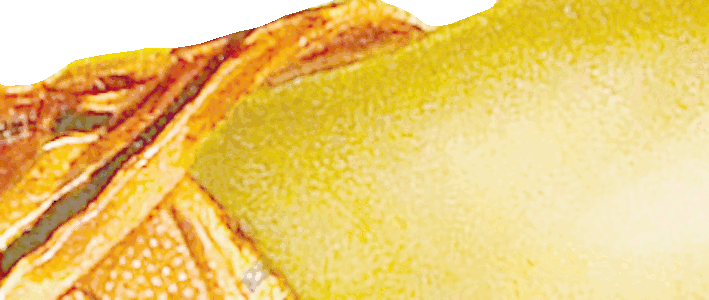
Egyptian bird |
- Zeus saved their unborn child, Dionysus, from her womb and
sewed him into his thigh until the baby was ready to be born.
-
For that reason, Dionysus was twice-born from Zeus' thigh.
-
Dionysus was the god of wine and inebriation.
- Let there
be light, sand.
- Zeus planting eggs all over the place.
And to all the beasts of the earth and all the birds in the sky and all the creatures that move along the ground—everything that has the breath of life in it—I give every green plant for food.” And it was so. (Genesis 1:30)
|
|
Leto |
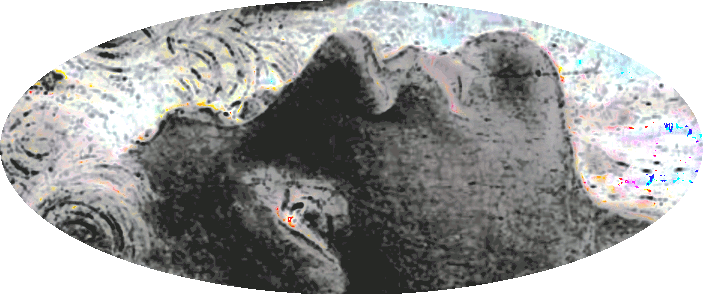
Her own island |
- Leto, the hidden one; the forgotten
one, was the daughter of the Titans Coeus and Phoebe.
- Leto was a wolf goddess and was the primary goddess of Lykia, the Wolf Land, now in modern Turkey.
- She gave birth to twins Apollo and Artemis,
divine archers, who were fathered
by Zeus.
It is not in the stars to hold our destiny, but in ourselves. (Shakespeare,
Artemis)
|
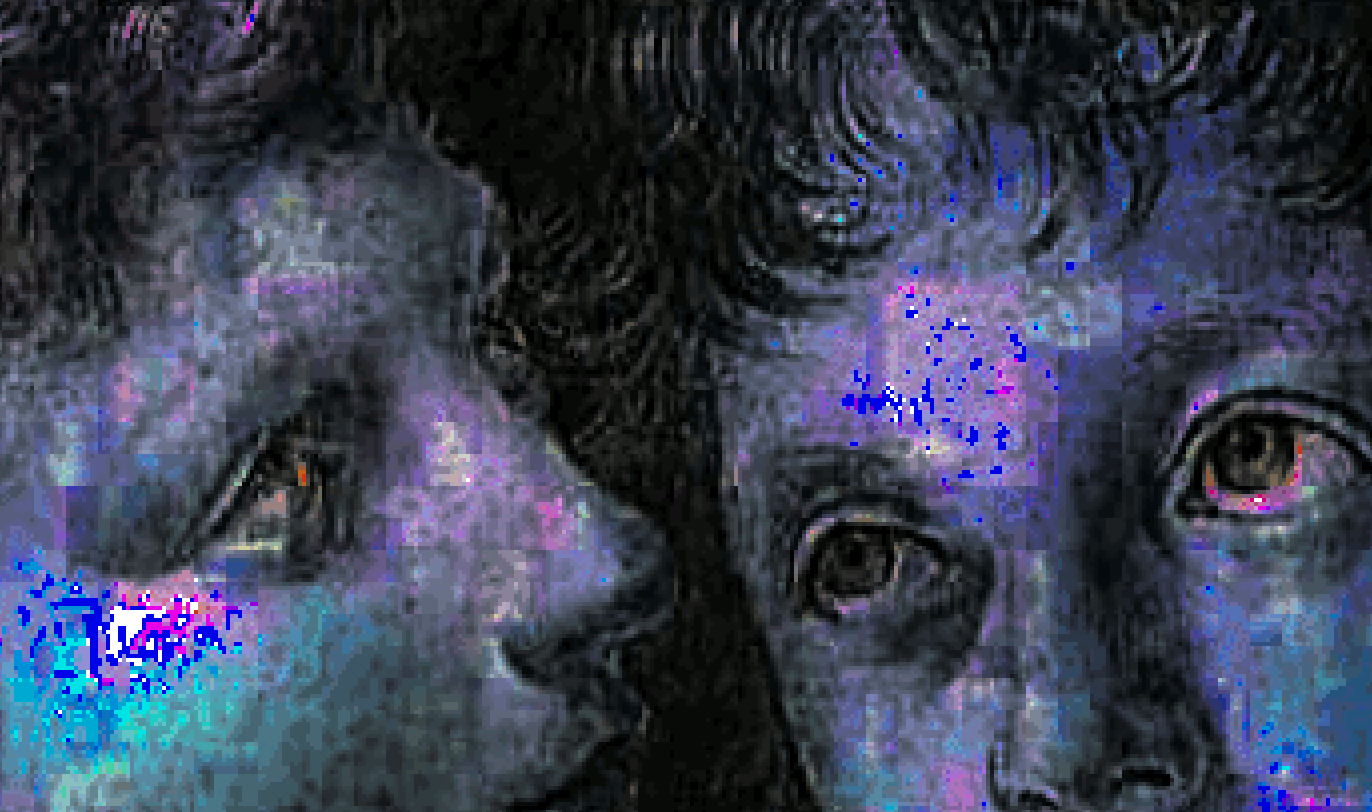
Apollo and
Artemis as
Shiva and Parvati |
- Jealous Hera, the wife of Zeus, ordered all lands to shun her and deny her shelter.
- Leto found an island, Delos, that was not joined
to the mainland or attached to the ocean floor, which was not
considered land or island where she gave birth.
- Artemis
was the moon and Apollo was the sun.
Doubt thou the stars are fire, doubt that the sun doth move. Doubt truth to be a liar, but never doubt I love. (Shakespeare,
Apollo)
|

Python, a giant serpent |
- Hera then sent the monstrous Python, a giant serpent,
against Leto to harm and harass her.
- Hera further
tormented Leto by delaying the birth, which left Leto in agony for days before she could
finally deliver the twins.
- Once twins Apollo and Artemis were born, Leto quietly
withdrew from Greek society and played a matronly role.

Quail |
- Leto,
which means lady or stone, was symbolized by the quail and the rooster.
- Python,
the serpent, was the enemy of her son Apollo, who slew it and took over Python's former home and
built the temple of Delphi there.
- Apollo was Zeus'
favorite son, and Hera's son was not much of anything to him, which caused Hera even
more grief.
William E. Gladstone (1809–1898),
Prime Minister of the United Kingdom during the reign
of Queen Victoria, was an expert on Greek mythology.
He identified Apollo as a divine child and savior and
Leto as his holy mother, and that she was a forerunner
of Mary, Mother of Christ. Leto may be among the Pagan
goddesses who masquerade under the guise of the Black
Madonna. (occult-world.com)
|
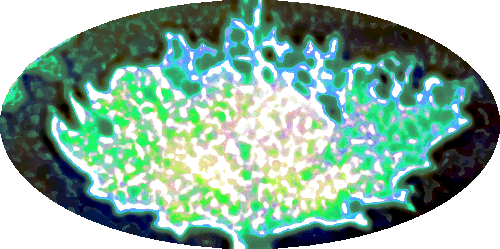
Frog fountain |
-
After some Lycian peasants prevented her and her infants from drinking from a fountain, Leto transformed them all into frogs inhabiting the fountain.
|
Europa |
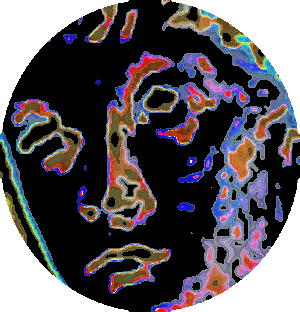
Phoenician princess |
- Europa was a Greek Phoenician princess from Tyre and the
mother of King Minos of Crete.
- The continent of Europe is named after her.
It is common in ancient Greek mythology and geography to identify lands or rivers with female figures.
(Wikipedia)
|
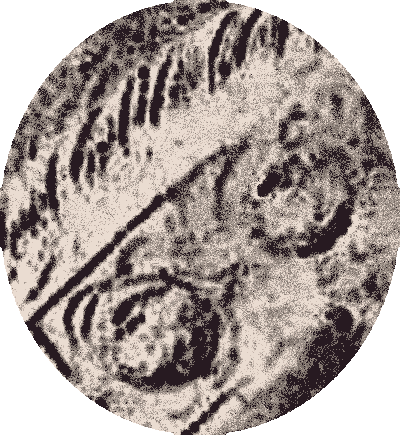
Zeus as white bull |
- Zeus
transformed himself into a tame white bull and mixed in with her father's herds
in order to seduce (rape) her.
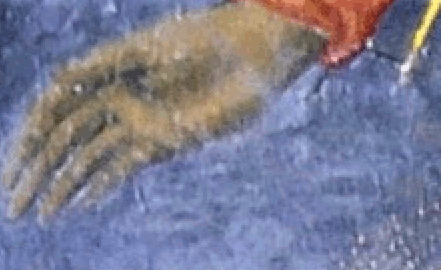
Zeus saffron crocus |
- She was seduced by the god Zeus in the form of a bull, who breathed from his mouth a saffron crocus.
- While Europa and her helpers were gathering flowers, she saw the bull,
petted his flanks, and got onto his back.
- Zeus took
advantage and ran to the sea and swam, with Europa on his back, to the island of Crete.
And gradually she lost her fear, and he
Offered his breast for her virgin caresses,
His horns for her to wind with chains of flowers
Until the princess dared to mount his back.
(Ovid, Metamorphoses Book II)
|

Europa in Crete |
- After arriving in Crete, Europa had three sons fathered by Zeus: Minos, Rhadamanthus, and Sarpedon.
- The first two sons becae judges of the Underworld after they
died.
- After Zeus admitted his true identity, Europa
became the first queen of Crete.
-
Zeus later re-created the shape of the white bull in the stars, which is now known as the constellation Taurus.
|
Themis |
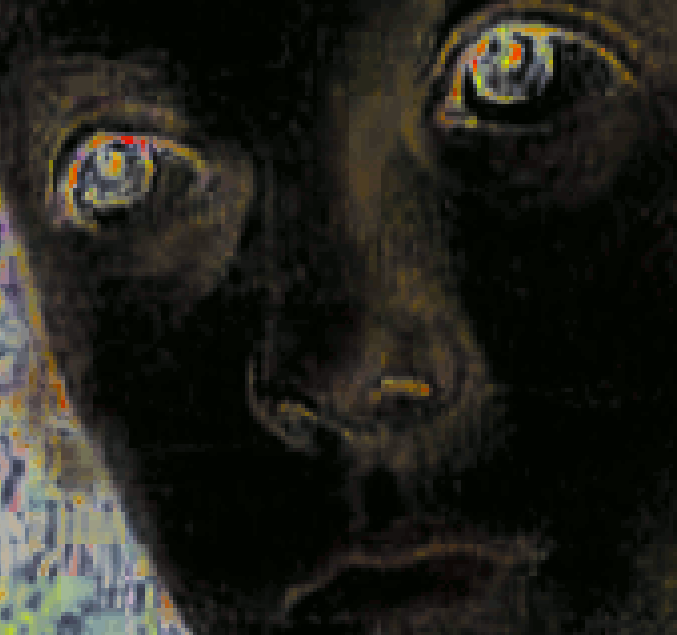
Spirit of Earth's
wisdom |
- Themis, steadfast, was the goddess of justice, righteousness, and
sacred knowledge in Greek mythology.
- She was the daughter
of Uranus and Gaia.
-
She presided over what is right and just, not necessarily what is legal.

Pan of water |
- Themis and Zeus were the parents of the Horae (Horai) and Moirae
(the Hours and Fates).
- Malte Marten.
Themis is portrayed seated beside Zeus advising him or gazing into a pan of water so that she can divine the future. (occult-world.com)
|
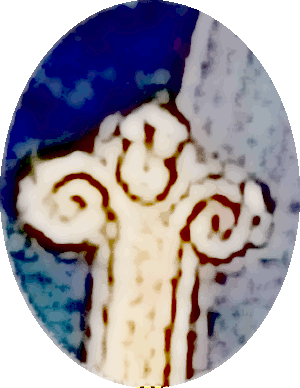
Zeus' cloud gates |
- Horae's
were the goddesses of the seasons and the natural portions of time.
- The earliest written mention of Horae is in the Iliad where they appear as keepers of Zeus' cloud gates.
- The Horae were originally the personifications of nature in its different seasonal aspects.
- Clock hands.
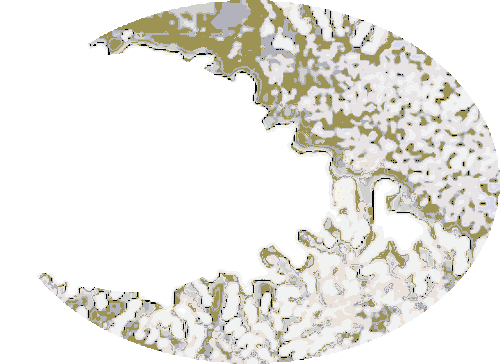
Garlands of flowers |
- Later they were regarded as goddesses of order in general and natural justice.
- They were represented by garlands of flowers.
- Sundial.
- Lachesis was one of the Three Moirai (Fates) in Greek
mythology. Her sisters were Clotho and Atropos, and they were
all daughters of Zeus and Themis.
- Lachesis is the measurer of the thread spun on Clotho's spindle, and determines Destiny, or thread of life.
|
Hestia |
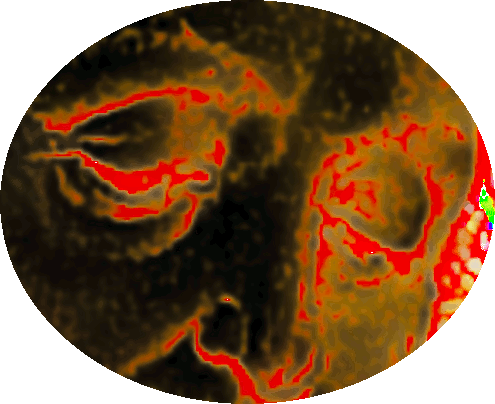
Hearth or fireside |
- Hestia, the sister of Zeus, was pursued by Poseidon, her
brother, and Apollo, her nephew, who both fell in love with
her.
- She made a vow to Zeus that she would remain a
virgin and never marry.
Love all, trust a few, do wrong to none. (Shakespeare,
Hestia)
|
- Although gods such as Zeus, Hades, and Demeter were considered the most powerful gods, even they had no sway over the Fates.
God saw all that he had made, and it was very good. And there was evening, and there was morning—the sixth day. (Genesis 1:31)
|

Signed by Leonardo DaVinci |
|
|

